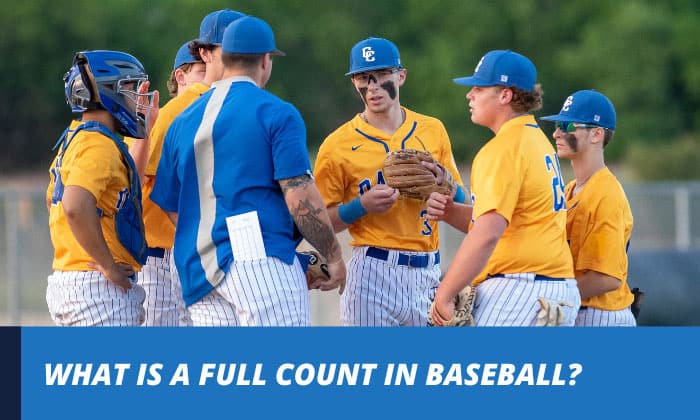Baseball comes with a lot of terminologies that are utilized during matches and are likewise used by coaches, players, umpires, and spectators.
However, these terms can be confusing, especially to those who are not much acquainted with baseball. In this article, you are going to learn “what is a full count in baseball”?
But to give you a glimpse, a full count is when the batter has already acquired a total of 3 balls and 2 strikes while on base.
Contents
Full Count in Baseball Meaning
A full count means a batter has reached the maximum count of balls and strikes during his stay on the base.
A 3-2 count makes up a full count in baseball, meaning that both the pitcher and the batter have no room for errors because the next ball or strike could potentially end the at-bat time.
This is also why this phenomenon is called a “full count” because a 3-ball, 2-strike is the most number of the count, and it cannot go higher than that without closing the at-bat time of a batter.
Interestingly, the full count term can be traced back to baseball’s rich history, as this may have been based on the usage of the old scoreboards back in time. The scoreboards are said to utilize 3 lights for balls, and 2 lights for strikes. In an event where all 5 lights show up on the scoreboards, a batter has reached a full count at the base.
In baseball, a full count may accidentally be done as a result of instructing the batter not to immediately swing at the ball during the first pitch to give the pitcher a hard time getting him out.
To do this, though, a pitcher smart enough to work the plate and a batter patient enough to execute the count are needed to prolong the at-bat.
How Does a Full Count Work?
Since you already know what a full count means in baseball, let’s head on to knowing how it works.
In a full-count situation, the at-bat time will end at the mark of another strike or ball. In this case, the pitcher and batter should be careful because another ball would result in a walk. For the batter, another strike would result in a strikeout.
However, the at-bat longevity could be extended by the presence of foul balls given that the defensive players were not able to defend it, which results in the batter receiving another pitch.
Frequently Asked Questions
How common are full counts in baseball?
A full count in baseball is not at all rare, in fact, it is a common occurrence as players have learned how to “work the count”. Over the years, the percentage of full counts happening per plate appearance has considerably gone up.
For example, during the MLB season in 2019, 14.3% of plate appearances ended at a full count that season. This statistic can be traced directly to the style of coaching during this era.
Is full count a pitcher’s count?
A full count cannot be considered a pitcher’s count, nor can it be considered the batter’s. This is because a full count directly affects both of them, as batters risk being struck out while pitchers can give the batter a walk.
Does a full count favor the batter?
No, it does not favor the batter. In a full-count situation, neither the batter nor the pitcher is in favor because when a batter swings at the pitched ball, his average would still not be favorable. For the pitcher, he risks giving a walk to the batter.
Conclusion
The counts involved in baseball can sometimes pose confusion to the spectators. In this article on “what is a full count in baseball?”, I hope that I was able to shed light on some things that you wanted to know.
We will be talking about a lot more interesting things that concern baseball so be sure to come back here because we have a lot of articles that may pique your curiosity. That would be all for now, let us hear from you!
Interesting posts you can refer to:
- PO Meaning in Baseball: a Simple Explanation
- What Is a Shutout in Baseball: A- Z Guide
- What Does K/9 Mean in Baseball?

A powerful swing and the ball is flying across the field, just one hit, and we might never forget the thrill it brings. I do not know about you, but I never do. Every baseball game is the chance to compete with others and cooperate with your teammate. It is among my biggest passions.

















